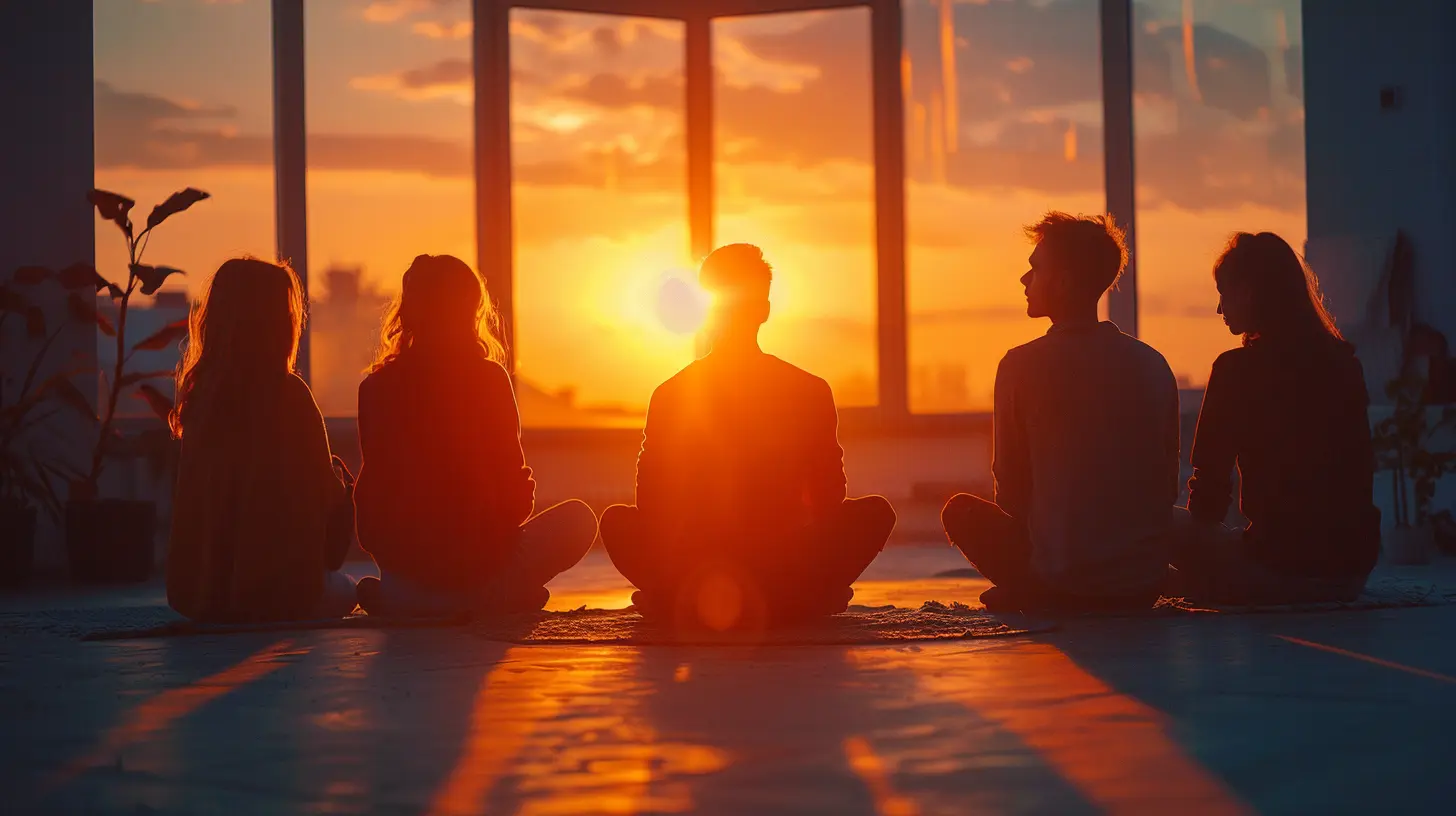Group Therapy for Trauma Survivors: A Path to Healing
19 August 2025
Let’s face it—healing from trauma is a beast. It’s messy, confusing, and sometimes downright exhausting. Whether it’s the aftermath of abuse, violence, grief, or a life-shaking experience that left you emotionally shattered, trauma doesn’t just disappear because time ticks by. It clings to your mind and body like an invisible storm cloud.
But here’s the thing: You don’t have to go through it alone. Group therapy for trauma survivors offers something powerful—a space where people who’ve been to hell and back hold space for each other. It’s raw, real, and incredibly healing.
Let’s break down the what, why, and how of group therapy. Grab a cup of coffee, get comfy, and let’s talk about how group therapy might just be the game-changer you’ve been looking for.
What Is Group Therapy, Anyway?
At its core, group therapy is a form of psychotherapy where a small group of people (usually 6–12) meet regularly under the guidance of a trained therapist. What makes group therapy different from individual counseling? It’s the group dynamic—it’s healing through connection.In the case of trauma survivors, the group serves as a sacred circle. It’s a place where every person is walking their own path—but everyone understands what it’s like to carry invisible wounds.
Trauma: It Doesn’t Just “Go Away”
Trauma is tricky. It messes with how you think, feel, and react. Maybe you jump out of your skin at loud noises, or maybe you numb out completely. Relationships get hard, trust feels scary, and sleep becomes a distant memory.Here’s the real deal: trauma changes your brain. It wires your nervous system for fear, hypervigilance, and survival. And healing from that? It’s not about “getting over it.” It’s about processing, reconnecting, and reclaiming your story.
This is where group therapy becomes a lighthouse in the darkness.
Why Group Therapy Works for Trauma Survivors
Let’s break down why group therapy kicks ass when it comes to trauma recovery.1. You Finally Realize You're Not Alone
You know that moment when someone else in the group shares a story that sounds just like yours? That lightning bolt of recognition? That’s validation.When you realize Others. Get. It. — your brain takes a breath. You're no longer the “crazy one” for having flashbacks or avoiding certain places. You're just human. And humans heal better together.
2. It Breaks Shame Wide Open
Shame is the silent killer when it comes to trauma. It whispers things like, “It was your fault,” or “You’re broken.”In a trauma group, that shame bubble? It pops.
When others offer compassion instead of judgment, you start to believe maybe you’re worthy of kindness—especially from yourself. And that is huge.
3. You Get Multiple Perspectives
Therapists are amazing, no doubt. But hearing from others who are living through the same pain offers something unique. Group members might share coping tools, insights, or experiences that shift your entire perspective.Sometimes you’re the one being held. Other times, you’re holding space for someone else. Either way, you're growing.
4. It Builds Connection (The Safe Kind)
Trauma fractures relationships and trust. You start to believe people aren’t safe. But in a well-facilitated trauma group, connection becomes medicine.Over time, you learn what safe connection feels like. You set boundaries. You practice vulnerability. You rebuild trust—in others and in yourself.
Types of Trauma Addressed in Group Therapy
Not all trauma looks the same. Some people survived childhood abuse. Others escaped domestic violence or navigated the chaos of war, loss, or accidents.Group therapy can address all kinds of trauma, including:
- PTSD (Post-Traumatic Stress Disorder)
- CPTSD (Complex PTSD)
- Sexual Assault or Abuse
- Childhood Emotional Neglect
- Domestic Violence
- Natural Disasters or Accidents
- Grief and Loss
No matter the source, if your nervous system is stuck in survival mode, group therapy can help you move toward regulation, safety, and healing.
What to Expect in a Trauma Group
So, what actually happens in a trauma-focused group therapy session? Picture this:You walk into a room (or log into a Zoom call), and you’re greeted by people who, like you, are carrying deep pain. There’s a therapist—trained, grounded, and ready to guide the session. The vibe is confidential, respectful, and non-judgmental.
Sessions might include:
- Check-ins about how everyone is feeling that day
- Sharing personal experiences (only if you're ready)
- Psychoeducation about trauma, triggers, and the brain
- Mindfulness or grounding exercises
- Processing emotions in a safe, contained space
- Feedback and support from the group
Here’s the kicker: You don’t have to talk if you’re not ready. Just being in the space and listening can be therapeutic.
The Role of the Therapist
The group therapist isn’t just a referee. They’re more like the conductor of a symphony—keeping the rhythm, holding the space, and making sure everyone feels seen and safe.They guide the group through tough topics, help members regulate their emotions, and prevent re-traumatization. A good therapist knows when to speak, when to hold silence, and when to invite deeper reflection.
Are There Risks to Group Therapy?
Look, no healing journey is risk-free. Group therapy can stir up old wounds. Hearing others’ trauma can feel heavy. Vulnerability is scary.But the environment is designed to be safe, contained, and supportive. And guess what? You’re never pushed to share more than you want. Plus, many group formats include rules and agreements around confidentiality, respect, and emotional safety.
If something feels too intense, a good therapist will support you with tools to help ground and regulate yourself.
Online vs. In-Person Groups: Which One’s Better?
Thanks to the digital age, trauma support groups are now more accessible than ever. So which is better—online or in person?- In-person groups create a deeper sense of physical presence and connection. Body language, facial expressions, and physical grounding exercises can really enhance the healing process.
- Online groups are more flexible, less intimidating, and accessible from anywhere. Great if you have social anxiety, live in a rural area, or want to dip your toes in first.
Truth is, both formats can be life-changing. Choose the one that feels safest and most doable for you right now.
How to Find the Right Trauma Group for You
Not all groups are created equal. Here’s what to look for if you're thinking about joining one:✔️ A credentialed, trauma-trained therapist leading the group
✔️ Clear ground rules around confidentiality and safety
✔️ Group members with similar trauma experiences (e.g., all survivors of childhood abuse)
✔️ A structure that includes education, coping skills, and sharing
✔️ A focus on consent—you decide when and what to share
Start with a Google search like “trauma group therapy near me” or check sites like Psychology Today, TherapyDen, or local mental health organizations. You can also ask your own therapist for recommendations.
What Real People Say About Group Therapy
Don’t just take my word for it. Here are some real, raw words from trauma survivors who’ve been through group therapy:> "Hearing their stories made me feel less broken. It gave me hope that I could get better too."
> "It was the first time I felt safe enough to cry in front of strangers—who weren’t strangers for long."
> "I walked in with shame the size of a mountain. I walked out with community, softness, and strength."
The testimonies all say the same thing: Healing flourishes in community.
Group Therapy Isn’t a Magic Fix—But It’s a Damn Good Start
Let’s be real. Group therapy won’t magically erase your trauma. It won’t zip you straight to happiness, nor will it protect you from future pain.But it will:
- Help you feel less alone
- Teach you tools to feel safer in your own body
- Uncover new layers of healing
- Rebuild your sense of self
- Give you community in a world that often feels cold and chaotic
And sometimes, that’s more than enough to start breathing again.
Final Thoughts: You Deserve to Heal
Trauma lies. It tells you that you’re broken, damaged, or unworthy of love. Group therapy calls BS on all of that.When you sit in a room—virtual or physical—with people who’ve walked through similar darkness, something shifts. You start to believe you can heal. And not just survive, but maybe even thrive.
So if you’re struggling in silence and wondering if you’ll ever feel whole again—consider group therapy.
Because the truth is, you don’t have to do this alone.
all images in this post were generated using AI tools
Category:
Group TherapyAuthor:

Jenna Richardson
Discussion
rate this article
1 comments
Julia Sharp
Group therapy for trauma survivors fosters connection and shared healing, revealing how collective vulnerability can transform individual pain into communal strength.
September 6, 2025 at 4:28 AM

Jenna Richardson
Thank you for highlighting the power of collective vulnerability in group therapy. It truly emphasizes the transformative impact of shared healing among trauma survivors.


